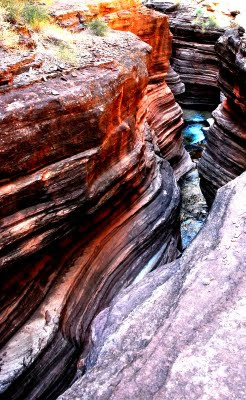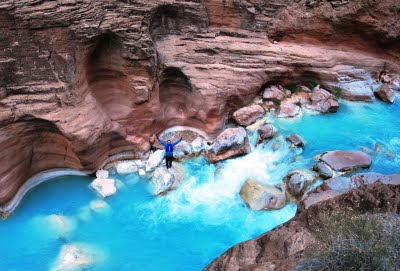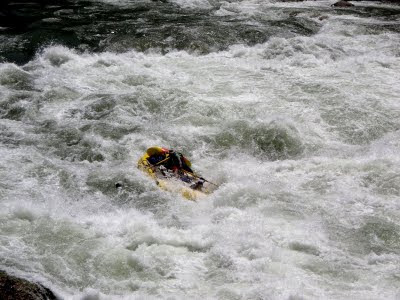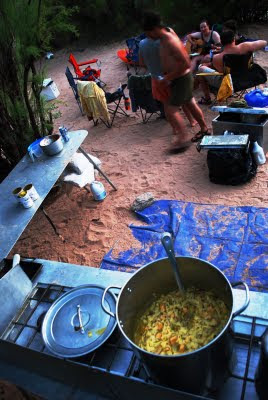
One of the greatest things about the current Grand Canyon permitting system is the “follow-up lotteries that happen throughout the year to fill unclaimed and canceled launch dates. The closer the launch date gets, the less people apply for it and the odds of winning are much higher. The toughest thing about these follow-up lotteries is that when you win a permit for a launch, you have one day to pay a deposit to claim your date. That means you have to figure out if you can throw together the trip almost immediately or lose your chance.

Another rule of the permit system is that you can only go once per year. However, I had been lucky enough to organize two previous trips on the Grand Canyon a mere six months apart (within the rules because they were in different calendar years). My first trip was in December of 2009 and then again in June of 2010; kayaking both times and having oar rafts haul our gear. After completing two raft-supported trips in such quick succession, I decided if I got another permit I wanted to put together a kayak only trip. Little did I know, but the opportunity would come sooner than I thought.

In the middle of the morning on October 29, 2010, I checked my e-mail to find that I had won another launch permit, this time for Jan 5, 2011. Unfortunately the e-mail notification had actually been sent the previous day, so I had until that afternoon to make a deposit to claim my permit or lose it. After a couple of hours and a lot of phone calls, I got commitments from three friends; Mike Tavares, Leigh Knudsen, and Ben Karp. With little time to spare, I paid the deposit and claimed our launch permit. Within a few days Brandon Hughett would also join the trip, bringing our group to a grand total of five. With the permit secured and the group established, we all turned our attention to the many logistical challenges we would have to overcome to carry everything we needed, for 226 miles, and comply with the many National Park Service (NPS) regulations. With just over two months until our launch, preparations shifted immediately into high gear.




The length of the trip combined with having to carry the gear required by the NPS made creekboats seem incapable of the task before us. In the past I had paddled my Everest for self-support (for up to three days), but this trip was going to be seven days. Perhaps on a summer self-support it could be done, but in the heart of winter, I knew I was going to need a different boat. At 10’ 2” long, with a gear hatch on the back, and a drop-down skeg to help power through the flats, the Pyranha Fusion seemed like it was designed for this type of trip. Even so, my first attempt at packing everything into the boat was an utter failure. I trimmed down and reorganized my gear and tried again with better results, but still didn’t fit everything. I had already considered that I might have to secure one dry bag on top of the hatch, but that was a last resort. To my relief, on the third try I finally managed to fit everything inside the boat.

I had every intention of paddling the loaded Fusion prior to the trip, but just never found the time. When we slid into the Colorado River at Lees Ferry, it was my first time to paddle the boat and the first time my Fusion boat has seen water. As we left the put-in behind and made our way downstream, everyone’s boats were riding low and we were all trying to adjust to paddling the most heavily loaded boats any of us had ever experienced. We covered a little over twenty miles the first day and set up camp under the kind of amazingly clear skies that can only be found in the desert.


On the second day, we woke up, ate breakfast, and worked to pack our boats as quickly as possible, but it was a process that would take us until the end of the trip to perfect. We finally got underway and started downstream, enjoying the rapids of the “roaring twenties”. A few miles into the day, I was finishing a medium sized rapid and starting to eddy out to watch the rest of the group come through. As I entered the eddy and started to turn around I was swallowed by the swirling eddyline. From what I remember (and what the others relayed to me later) the freestyle show went like this: a full mystery move, resurfacing in a back ender, rolling up as my bow was sucked down, upside down again, carped another couple of roll attempts… and swam like a fish!


The swim itself actually wasn’t bad at all. My IR drysuit kept me dry and the eddy current took me and my gear right to a small beach. I emptied my boat and did my best to laugh off the swim with the rest of the group. However, as I got back in my boat I realized I was missing one thing, our map. Having paddled the Grand Canyon twice before with no problems, swimming was far from my mind and didn’t seem likely. On this trip I was continuing a bad habit I had started on other trips… paddling with the map in my lap, just under my sprayskirt. When I swam, I grabbed the drybag that was in my lap, but never saw the map.


On some rivers, loosing the only map, 30 minutes into the second day of a seven day trip would have been a major concern. However, my only real worry was making sure we were keeping an appropriate pace to meet our shuttle at the take-out on the correct day, but we did have several things in our favor. This was my third trip and Leigh’s second and we remembered the approximate mileage of some of the major rapids and landmarks. We also knew that because of our fast pace, we would be passing other groups who we could talk with to gauge our progress.

After finishing up the rapids of the roaring twenties, the rest of day two mostly consisted of paddling hard through a lot of flat water. By the end of the day, we had only covered around thirty miles, short of our needed average of thirty-three mile per day. Since we had only covered around twenty miles on the first day, our deficit over the first two days was now around fifteen miles. That night around the fire, there was some discussion that perhaps our planned seven-day descent was overly ambitious. Perhaps we would have to use our satellite phone to delay our shuttle. Perhaps Ben and Leigh would have to change their flights. Perhaps, perhaps, perhaps. The plan was ambitious, but I was still fairly confidant that the faster sections of the canyon, which were still ahead of us, would allow us to make up the mileage and finish on schedule.


Over the next four days, we paddled from around 9:00 AM until sometime around 4:30 PM each day and usually stopped for a lunch break sometime around noon. We were now moving much more quickly and efficiently, on and off the water. Some days we covered up to 45 miles, more than making up for our slow pace the first two days. By the time we set up camp on the sixth day, we estimated that we were only around fifteen miles from the take-out at Diamond Creek.

The following morning we quickly knocked out the remaining mileage and were busy unpacking and sorting our gear when the shuttle driver arrived with Brandon’s truck. We loaded everything and began the rough drive up Diamond Creek road, back towards civilization. As we started back towards Flagstaff, I couldn’t help, but reflect on the three distinctive trips I had made down the Colorado River in the previous fourteen months. Cumulatively between the trips I had spent three nights camping at Lees Ferry (the nights before the launches), thirty-two nights camping in the canyon itself, and thirty-five days paddling the Colorado River. It was a fun scorecard to add up considering that I had once thought of the Grand Canyon as a once-in-a-lifetime sort of thing. Each of the trips was very different and each was fulfilling in different ways.

Our self-support trip turned out to be everything we had wanted it to be. It was challenging logistically to carry everything we needed for a week on the water. It was challenging physically to cover so many miles each day (especially in the limited daylight of winter). It also felt much more like a normal river trip because we got to run big rapids every day. The lazy pace of a raft-supported, booze cruise is also nice. However, I couldn’t help, but feel that the nature of our trip could be considered the most pure way to descend any river. Just five friends, hauling everything we needed in five kayaks. In retrospect, even the loss of the map added to my enjoyment of the trip. Instead to having specific campsites in mind and looking at the map all day to follow our progress, we just paddled downstream. Each bend in the canyon contained surprises for us and each day we had to find a random campsite and guess at our mileage.

At the end of my previous trip, I had wondered if I would ever paddle the Grand Canyon again. However, this time around, I knew that I would be back. As we left the canyon behind, I promised myself I would be even more diligent in monitoring and applying for future permits. The Grand Canyon is a place that is simply too grand not to go back again and again.

Until Next Time...
-adam goshorn

| kayak session |






























































